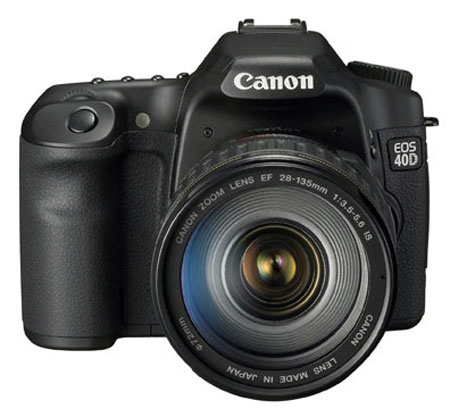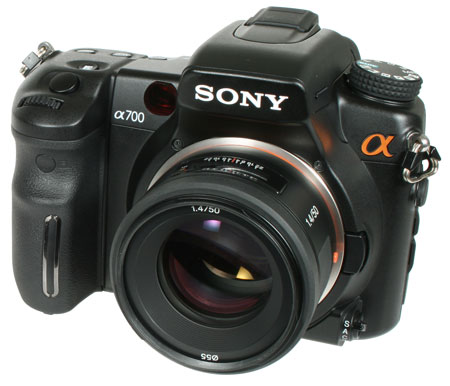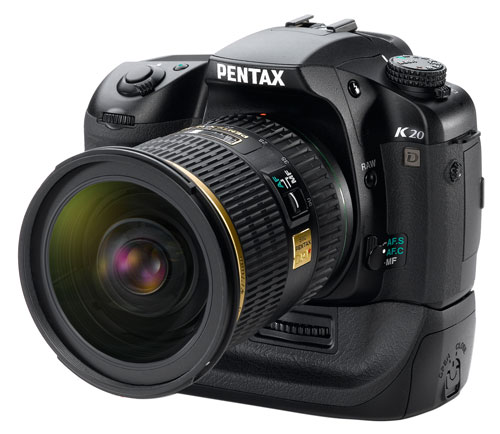How does Noise Reduction Work?
If you have ever looked closely at the lower noise images from a Nikon or Canon camera, you will notice that lower noise at high ISO is something of a balancing act. Low noise is normally achieved at the expense of loss of detail in high ISO images. The low-noise appearance is the result of smearing and softening details and sharpness, and the effectiveness of the noise reduction is really very subjective. It is a balancing act between sharpness on the one hand and noise on the other. It is even more complicated than this as noise reduction can be applied in both Chroma and Luminance dimensions and the impact of each is different. However, in the end noise reduction is always a balance between loss of detail and visible noise.
There have been many software noise reduction software programs in recent years, but most have left us with the impression that it was just as easy to live with the noise as it was with the soft smeared images of noise reduction software. Perhaps this is the result of viewing the effects of noise reduction software on Canon and Nikon digital images. As some review sites point out endlessly, Canon and Nikon understand high ISO noise and they do a good job with in-camera JPEG processing of reaching a compromise between noise and sharpness. Conversely, these same review sites endlessly point out that Sigma, Pentax, and Olympus (until recently) have noise problems and don't correctly process images. Olympus has apparently seen the noise processing light since recent Olympus model JPEG images are actually now sharper and lower noise at high ISO speeds than the RAW images captured under the same conditions. We have seen this ourselves, and so have several other respected camera review sites.

As explored in the Digital Sensor, one great appeal of the CMOS sensor over the CCD is the ability to combine noise reduction and other processing on the sensor itself. Canon has enjoyed this advantage exclusively until recently, and Canon has also been widely praised for the exceptional low-noise of their high ISO images compared to every other manufacturer in that period. The fact is Canon has used noise reduction in processing RAW and JPEG files on their image sensors. Now Sony and Nikon are doing the same in the D300 and A700 model CMOS sensor.

Sony engineers had to be scratching their head when they saw recent reviews of the A700 that screamed about noise-processing in their RAW images. The Nikon D300 is the same sensor that has noise reduction built onto the sensor just as Canon CMOS sensors do. We suppose Sony got the temper tantrum because they weren't Nikon, and because they were not as subtle as Nikon in their discussion of sensor technology. Also, in fairness to the noise reduction complaints in some reviews, the supporting Sony BIONZ processing was not very subtle compared to the EXSPEED circuitry used by Nikon. Sony has subsequently refined their post processing with firmware upgrades to the A700.

Regardless, the fact remains that Canon, Nikon, Sony, and Olympus all likely employ noise reduction in the creation of their RAW files with their CMOS sensors, and certainly they do so in the conversion to JPEG files. Sigma uses almost no noise reduction in their file conversion, and Pentax uses very little noise reduction in their in-camera JPEG processing, which is why Pentax reviews always suggest shooting RAW. The Pentax image-processing software (Silkypix) and Photoshop RAW processing certainly do employ more noise reduction than Pentax does in-camera, and thus yield better appearing images at high ISO.










61 Comments
View All Comments
aeternitas - Saturday, August 2, 2008 - link
http://www.fredmiranda.com/IS/">http://www.fredmiranda.com/IS/aeternitas - Saturday, August 2, 2008 - link
1. When doing comparison shots, have a mouse over load the second image and a mouseoff show the first. Or simply have one image and a list of links that dynamical and instantly change that image so comparisons can be made in detail. This is what any self respecting site that has to so with image comparisons would do. This screams "early 90s"2. Though one is usually important, its not here for the even worse reason that the originals were all far better than the filtered images! Why bother uploading this rubbish? Did you even bother to compair or is your eye that attracted to the early digital noise reduction effect of smearing?
2a. Look at the red detain in the water of the beach in the unaltered image. Then look at them in the "improved" version
2b. Look at the boat image, look at the sail lines in the unaltered then the altered.
HORRBLE and clear examples. Im not sure about this program. Im not sure what it can really do, but for someone to upload this crap as examples shows that I shouldent really rely on them for a review of the product. If i were trying to sell this product id have a word or two with you about taking this whole thing down because at 70$ this isnt aimed at grandma. This is aimed at the kind of people reading this! I wouldn't buy this if you gave me 70$ to screw up my images judging by this review.
If any of you want a real program to actual improve digital imagery, here is one made by a actual professional photographer with many years experience and a sharp eye for detail;
http://www.fredmiranda.com/software/">http://www.fredmiranda.com/software/
elmerFudge - Wednesday, July 30, 2008 - link
I was a bit wary at first in investing even a bit of money in software noise filters. Most smell of snake oil. But the current crop of noise filters, especially Noise Ninja do a very good job in the right hands. The examples shown lack detail where it counts: grass, waves, leaves, hair trees, sand and texture in general. Worst still the images look like a bad job with photoshop. Show us what a pro can do with that software. reducing noise is a trade-off. I don't mind film-like grain that hides noise. Inspecting one of the images(800-coming-lrg), the histogram is compressed and the highlights are blown. For this you could have considered a tri-pod and longer exposure.haplo602 - Tuesday, July 29, 2008 - link
I stopped reading after seeing the Sigma images. The processed ones were smeared and flat compared to the original ones. I did not even look at the full size images.Just look at the sea in front of the lonely boat in one of the pictures. Also the trees/bushes on the right side hill above the houses. I mean how can you be satisfied with such a loss of detail?
These heavy noise processing programs are only viable if your subject had large flat colored surfaces with little fine detail. Otherwise you end up with blocks of pixels sharing the color of grass but lacking any kind of detail that it actualy IS grass (same with stucco walls etc.).
royalcrown - Tuesday, July 29, 2008 - link
I realize the pace of exciting hardware has slowed since the 90's...but all these camera, Ipod, Iphone..yada yada, E3 reviews are BOOOOORING !! Did I mention boring yet........zzzzzzzzzzzzzzzzzzzzz ?
I only come here once a week at most because all this gadget crap is a snoozefest. No offense because I suppose it's slim pickings, just my 2 cents !!
ianken - Tuesday, July 29, 2008 - link
NR has its place, but even in these web-res samples you can see an utter devastation of detail in the water shots.NR simply replaces random noise with deterministic noise. Where possible you want it to be a subtle as possible. Most professional restoration or NR efforts are very hands on and manual and for good reason: differentiating between detail and noise is very non trivial, and even more-so with still images.
IMHO in these samples it's about as subtle as a brick to the head.
Perhaps these samples are not indicative of what the software can really do?
n4bby - Monday, July 28, 2008 - link
you have got to be kidding me. those Noiseware-processed Sigma images are TERRIBLE. it totally obliterates fine contrast and kills the resolution of the images. at these web image sizes, i clearly prefer the originals. i work closely with image editors at a professional stock photography site and believe me, those processed photos would NEVER be admitted into our library. the original "noisy" ones might be acceptable though (if the subject matter were more compelling, but that's a different matter).we all appreciate the effort, and we know the ad dollars help the site which in turn helps us, but please - leave the digital photography reviews to the pros, and stick to topics your staff is qualified to comment on.
Traciatim - Monday, July 28, 2008 - link
I didn't see a rebuttal here, but for those that compared the file sizes differ drastically which is why the quality difference that is not the case. JPEG has an incredibly hard time compressing noise, which is why when the noise is removed the file size drops by huge amounts.Take for example the two images below. I wandered outside and took an ISO 100 TIFF with my old Olympus C5050Z. I used Photoshop to chop out a 1000x1000 section of cloud. I saved the new image as a JPEG with very good details settings. I then did a Gaussian Blur of 1.5 pixels and saved the same image (simulating a noise reduction, I usually use Neat Image but recently went through a reinstall) and saved the image with the same JPEG settings. Now each image that is 1000x1000 is either 296505 bytes, or 119464 bytes, less than half the size.
Keep in mind you can use this trick to blur things in images to make your content smaller. If you have a web cam you can put things just a shade out of focus to increase your frame rates, and also if you can find a video noise filter program for your web cam to seriously improve your frame rates with lower bandwidth.
Image 1 (Bo Blur):
http://i201.photobucket.com/albums/aa229/Traciatim...">http://i201.photobucket.com/albums/aa229/Traciatim...
Image 2 (Blur):
http://i201.photobucket.com/albums/aa229/Traciatim...">http://i201.photobucket.com/albums/aa229/Traciatim...
haplo602 - Tuesday, July 29, 2008 - link
well the JPEG compression will also create more loss of detail on the noise-reduced images, because it can compress them more aggressively. so that's a double edged sword.Deadtrees - Monday, July 28, 2008 - link
Many people have been complaining about your using 'Nvidia SLI' box for the high-ISO/noise-level test, yet you don't seem to care.I mean, what kind of reviwer uses 'glossy paper box' for noise tests?
Please use something that has details.
From time to time, you bashed internet reviews that are more like benchmarks and promised to bring field reviews. You not only failed to bring such reviews but also failed to do a simple benchmark one.
Please...Anandtech deserves better....